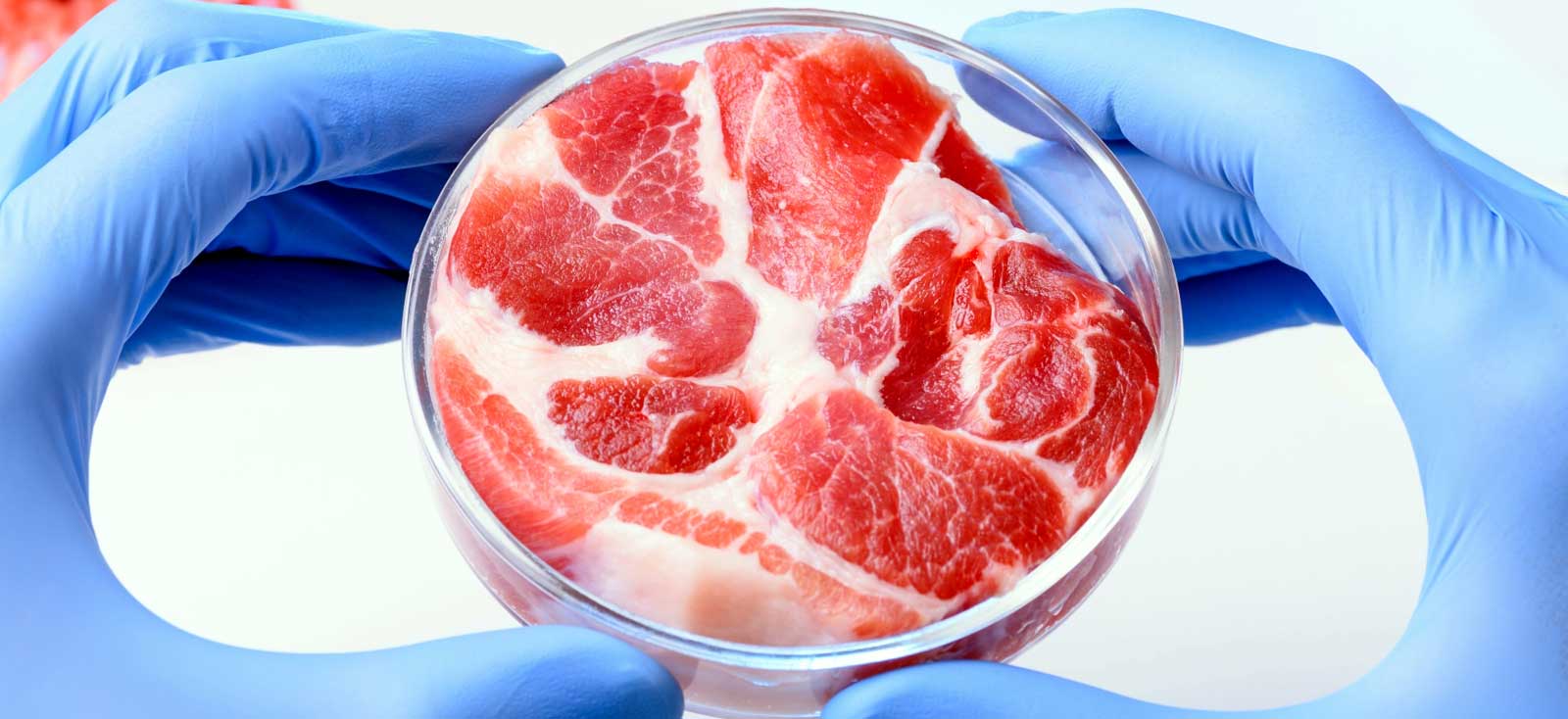Cellular agriculture is the field of producing agricultural products, such as meat, dairy, and eggs, using cell culture techniques instead of traditional farming methods. This includes the use of stem cells, which can be engineered into becoming a variety of different cell types, such as muscle or fat cells. Cellular agriculture may be the key to helping the food industry create a more sustainable and efficient way to produce food, by reducing the need for land, water, and other resources that traditional farming methods require.
Whereas traditional agriculture relies on fields and farms, cellular agriculture works by growing cells (from cows, chickens, and fish) to produce the desired product in a laboratory setting. The cells are grown in a nutrient-rich environment that allows them to multiply quickly and efficiently. Once the desired product has been produced, it can then be processed into its final form for consumption. Advocates say this process is more efficient and sustainable because there is no need to raise and feed animals before harvesting their products.
One of the most well-known examples of cellular agriculture is lab-grown meat. This is produced by culturing muscle cells in a nutrient-rich solution, allowing them to grow and multiply. The resulting product is a type of meat that is identical to that produced by traditional farming methods, but without the need for raising and slaughtering animals. This has the potential to reduce the environmental impact of meat production, as well as address concerns about animal welfare. Another example of cellular agriculture is the production of dairy products. This can be achieved by culturing mammary cells in a lab, which can then produce milk proteins, such as casein and whey. This has the potential to greatly reduce the environmental impact of dairy production, as well as address concerns about animal welfare.
Cellular agriculture may address food security concerns by providing a way to produce food in areas where traditional farming methods are not feasible, such as in urban areas or in regions where water is scarce. It could also be used to produce food during times of crisis, such as during natural disasters or when traditional farming methods are disrupted by conflict.
While cellular agriculture is still in its early stages of development, proponents insist it will change the way we produce and consume food in the future. However, there are still many challenges that need to be addressed before it can be widely adopted, such as improving the efficiency and scalability of the production process, and addressing concerns about the safety and regulation of these products.
Some challenges that Cellular Ag faces
While cellular agriculture has the potential to benefit the food industry and address many environmental and ethical concerns, there are hurdles before that need to be cleared.
One major downside is the cost. Currently, the process of producing lab-grown meat and other cellular agriculture products is still relatively expensive and not yet cost-competitive with traditional farming methods. This high cost is mainly due to the use of expensive equipment and materials, as well as the need for skilled personnel to operate the process.
Also, governments haven’t fully weighed in so there’s still a lack of regulation when compared to traditional Ag. There are currently few regulations in place to ensure the safety and quality of these products but oversight will surely increase when and if products go mainstream especially if consumers sense that there may be a risk that these products may not be safe for consumption.
Will consumers buy in?
Perhaps the biggest headwind that could stall cellular ag adoption lies with consumers. There have been other trends in the food industry that have shown promise but never matured because consumer taste and behavior can be hard to change. For instance, sales of plant based meat products (which are different from lab grown meats) have been available since 2016 but are already showing signs of resistance. In 2021, Americans spent $1.4 billion on plant based meat but that is only 1.4% of the total meat category.
In the U.S. particularly consumers love their traditional meat and it’s there that cellular agriculture may not be able to fully replicate the taste, texture, and nutritional value of traditional products. This could limit its acceptance and widespread adoption and this could put a real roadblock in the hope that cellular ag technology will succeed in solving so many of the problems related to food production.
Some Resources:
- New Harvest is a non-profit organization that conducts research and promotes the development of cellular agriculture
- Answers to frequently Asked Questions asked about cellular agriculture from The Cellular Agriculture Society
- The Cell Culture Dish is a blog devoted to news, trends and research in the field of cellular agriculture

